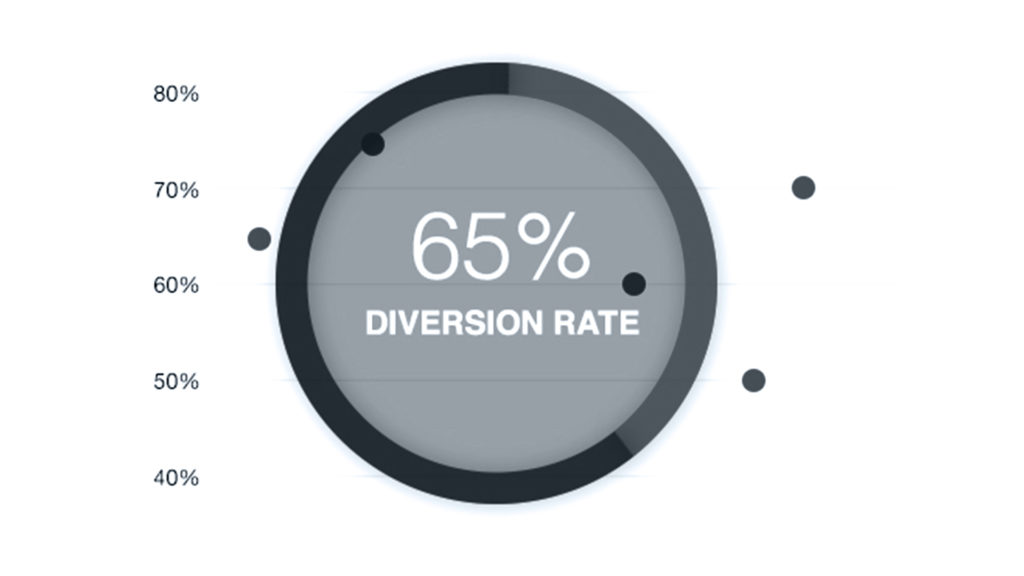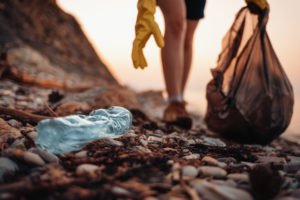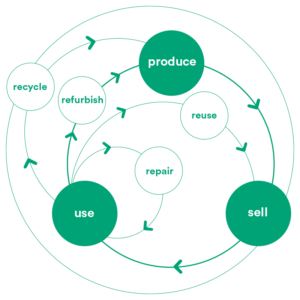The process of measuring waste diversion rates is one the most effective and important steps that you can take towards improving the environmental impact of your business. With a firm understanding of this rate, you can gain insight into the types and volume of waste your business is producing, as well as how that waste is being disposed of by employees within your company, and where your waste is being eventually directed.
This is valuable information, as gaining a firm understanding of the relationship that your business has with waste ensures that making informed decisions about waste streams and how to improve your business’s impact on the planet is much clearer. In turn, this allows your company to push towards your sustainability goals, something that will not only help mitigate climate change but also speak to the growing demand from consumers for sustainable products and services.
So, whether your company is already looking for ways to increase sustainability, or you’re just starting out on your journey, here we’ll explain what waste diversion is, why it’s important, and how you can use it to make your business more sustainable. Read on to learn how to optimize the diversion and tracking of you waste streams with RTS and gain a more comprehensive picture of what exactly what happens to your business’s waste once it has left your premises.
What is waste diversion?
Waste diversion is a rate which measures, by weight, the portion of waste produced by an organization which is sent somewhere other than landfill or incineration. If, for example, 45% of a business’s waste is effectively recycled, composted, or donated, and the remaining 55% of their waste is sent to landfill, then that business has a diversion rate of 45%.

It is worth noting that the rate is based upon where waste ends up, rather than the type of waste generated. For example, if a business produces only recyclable waste but that waste ends up in landfill, then the business has a diversion rate of 0%. However, that business has a potential diversion rate of 100% since all of its waste is recyclable and none of it needs to go to landfill. Put simply, that potential rate becomes the actual rate when the business recycles a percentage of its waste.
The diversion rate is an important metric for businesses that wish to improve their environmental impact. By comparing the difference between the existing diversion rate and the potential diversion rate, businesses are given greater clarity on their sources and types of unnecessary waste. This is known as benchmarking, establishing a baseline diversion rate from which businesses can begin to leverage improvements across a broad range of different areas.
Equipped with this knowledge, businesses are then empowered to set clear sustainability goals using waste diversion data to track progress. Within the sustainability world, transparency is king, and with access to accurate and reliable data, businesses can avoid greenwashing and build truly sustainable operations.
Why is waste diversion important?
It’s important for businesses to increase their diversion rate, as using landfill and incinerators to dispose of trash has a wide range of negative social and environmental impacts. Some of these are already well documented, such as the production of greenhouse gasses and other types of pollution. However, others such as how land is used and the impacts of waste management and disposal on society are less known.
Below, we look at some of the most important reasons for businesses to increase waste diversion and recycling rates, as well as the kinds of impact these factors have on both the planet and the communities in which businesses operate.
Greenhouse Gasses
Landfill Gas (LFG) is a potent collection of gasses which is released from landfills due to the anaerobic breakdown of inorganic waste. Its composition is approximately half methane, and half carbon dioxide, both of which are greenhouse gasses that trap heat in the atmosphere and contribute to global warming. This contribution is quite significant. In 2019, landfill emissions made up 17% of total US methane emissions, making landfill the 3rd largest source of national emissions.

Pollution
Landfills and incinerators not only contribute to atmospheric pollution, but they also create further toxic environmental conditions. For example, landfills can contaminate local waterways and soil when rainwater combines with the hazardous chemicals which are disposed of in household cleaners, for example. The combination of water, chemicals and leftovers from rotting food waste also create a highly toxic leachate, which can pollute the surrounding area during storm floods, or by filtering directly into the ground. This poses a real threat to local biodiversity, including any humans who ingest the liquid, water, or soil.
Land Use
The continued, unchanged use and development of landfills and incinerators will require the production of more facilities as waste generation rises alongside population. Today, there are more than 2,600 landfill projects within the US, and this figure is expected to rise as they become full, with estimates suggesting that “closed” or full landfills require a further 30 years of monitoring and management after they have stopped accepted trash.
Rather than developing more landfill facilities to keep pace with our growing material economy, a better relationship with waste that prioritizes diversion will allow that land to be used for farming, housing, or even left as a raw natural habitat.
Social Injustice
Throughout the US, waste facilities contribute to the creation and perpetuation of social inequality. Most frequently, landfills are developed and operated in proximity to communities which have been subject to historical discrimination, such as BIPOC communities that were subject to racist redlining practices.
These facilities have adverse effects on the health of those who live near them, making life even more difficult for communities which have already been subjected to discrimination. As such, reducing our reliance on polluting and dangerous waste facilities is an essential step towards meeting the Department of Energy’s criteria for Environmental Justice.

Source: rts.com
Circular Economy
There are also plenty of benefits to improving diversion rates, and among them is the advancement of more sustainable economic practices that prioritize circularity. High diversion rates are a good indicator of a circular economy, a system of production and consumption that aims to keep resources and embodied energy “in the loop”.
If we are to eradicate, or at the very least minimize, our reliance on landfill, then the circular economy is a critical piece of the puzzle. Learning and implementing its philosophy and practices are key to increasing diversion rates, which in turn, will further boost circular economics by ensuring products, materials, and resources are never viewed simply as trash.
How do you track waste?
Understanding how we track and monitor waste generation and diversion is a fundamental step to increasing diversion. Put simply, in order to establish your diversion rate and potential diversion rate, you must first examine your waste stream. Doing so is the best way to get a clear picture of what types of waste are being produced in your company, how much of it there is, and where it is being sent.
When doing this, it’s a good idea to seek help from a team of professionals that can conduct a full waste audit for you.
The process starts when you choose a 24-hour period in which you expect to produce a typical amount of trash. During that period, waste is collected within the office as normal; dumpsters, trash cans and sacks, and other containers remain placed as they usually would. The key difference is that those receptacles are then sequestered and taken to an examination area, rather than the contents being disposed of in the usual way.
 Within the designated examination area, auditing professionals will analyze the waste that you have collected with the intention of creating a descriptive and prescriptive report.
Within the designated examination area, auditing professionals will analyze the waste that you have collected with the intention of creating a descriptive and prescriptive report.
The waste is first weighed and sorted into several categories, including, but not limited to, trash, clean paper, soiled glass, metals, and organics. The quantity of each type of waste is recorded, as well as how much of each type was placed in the optimal trash receptacle for its type.
From this first analysis, several key pieces of information are extrapolated. The first is what waste is generated by your business, and how much of that waste is currently being disposed of in the best way possible. The second piece of information is which waste streams need to be optimized to achieve the highest diversion rate possible.
This optimization may take several forms, from establishing dedicated bins for organic waste to creating clearer visual instructions on how to separate recyclable and non-recyclable materials.
This information is used as the basis for a report, which lays out the examiners’ findings in simple terms and with clear tables outlining your waste generation and the areas which are available for improvement.
How RTS can help to optimize your waste streams?
As a registered B Corp, and with a team of dedicated TRUE advisors, RTS is committed to increasing diversion rates and promoting the circular economy for business across the US. This means providing data and visibility into waste and production habits so clients can dramatically improve their practices.
 RTS can help you to begin your journey by offering benchmarking services, which include a free waste assessment where our team physically sorts through waste from a 24-hour period into 10+ categories to establish a waste stream profile. In turn, this profile, or benchmark, is then used to recommend ways to capture waste types and sort them into the correct waste streams to increase diversion.
RTS can help you to begin your journey by offering benchmarking services, which include a free waste assessment where our team physically sorts through waste from a 24-hour period into 10+ categories to establish a waste stream profile. In turn, this profile, or benchmark, is then used to recommend ways to capture waste types and sort them into the correct waste streams to increase diversion.
Further to this, our TRUE Advisors can help with providing and installing the right size bins and dumpsters to facilitate waste collection and sorting, as well as provide insights into opportunities for reuse and sustainable purchasing to optimize both start- and end-of-life resource conservation. Hands-on consulting is also available to clients to help inform and educate staff on how to improve and streamline existing practices within your organization.
Work directly with clients, we establish waste reduction and diversion processes that are specific to your site and needs, focusing on your current waste generation to implement realistic yet effective steps that will allow you to meet and exceed your sustainability goals and initiatives.
Underpinning these services, RTS connects your business with local haulers using cutting-edge routing technology, streamlining waste collection through both recurring waste collection and on-demand services for a comprehensive range of waste types. Seamlessly integrating with your existing operations, this ensures that the right waste gets to the correct location as efficiently as possible.
If you want to learn more about responsible waste disposal and how your business can begin increasing diversion rates, then contact our TRUE advisors today to discuss your requirements and learn more about how to develop a healthier relationship with waste by subscribing to the RTS blog.

